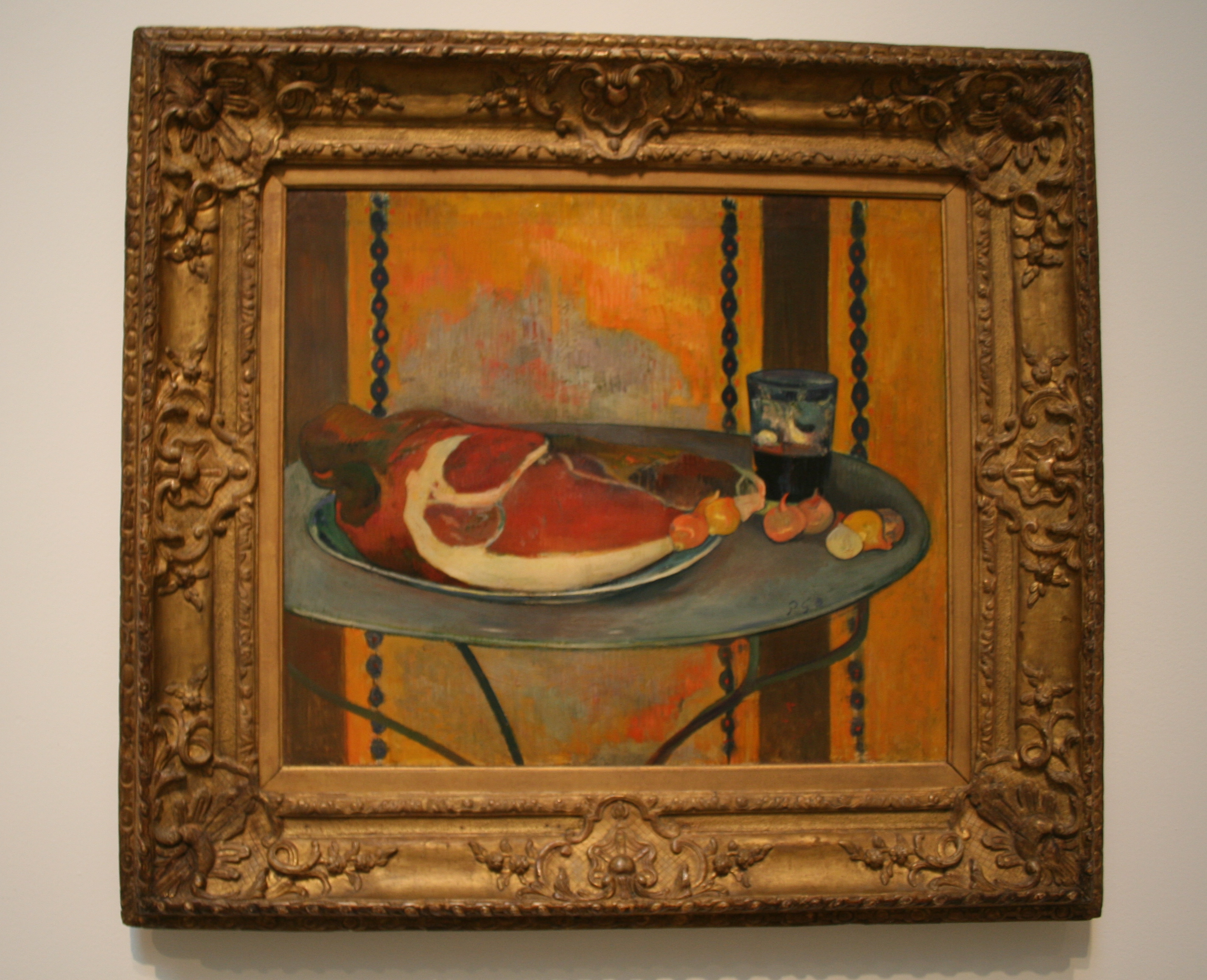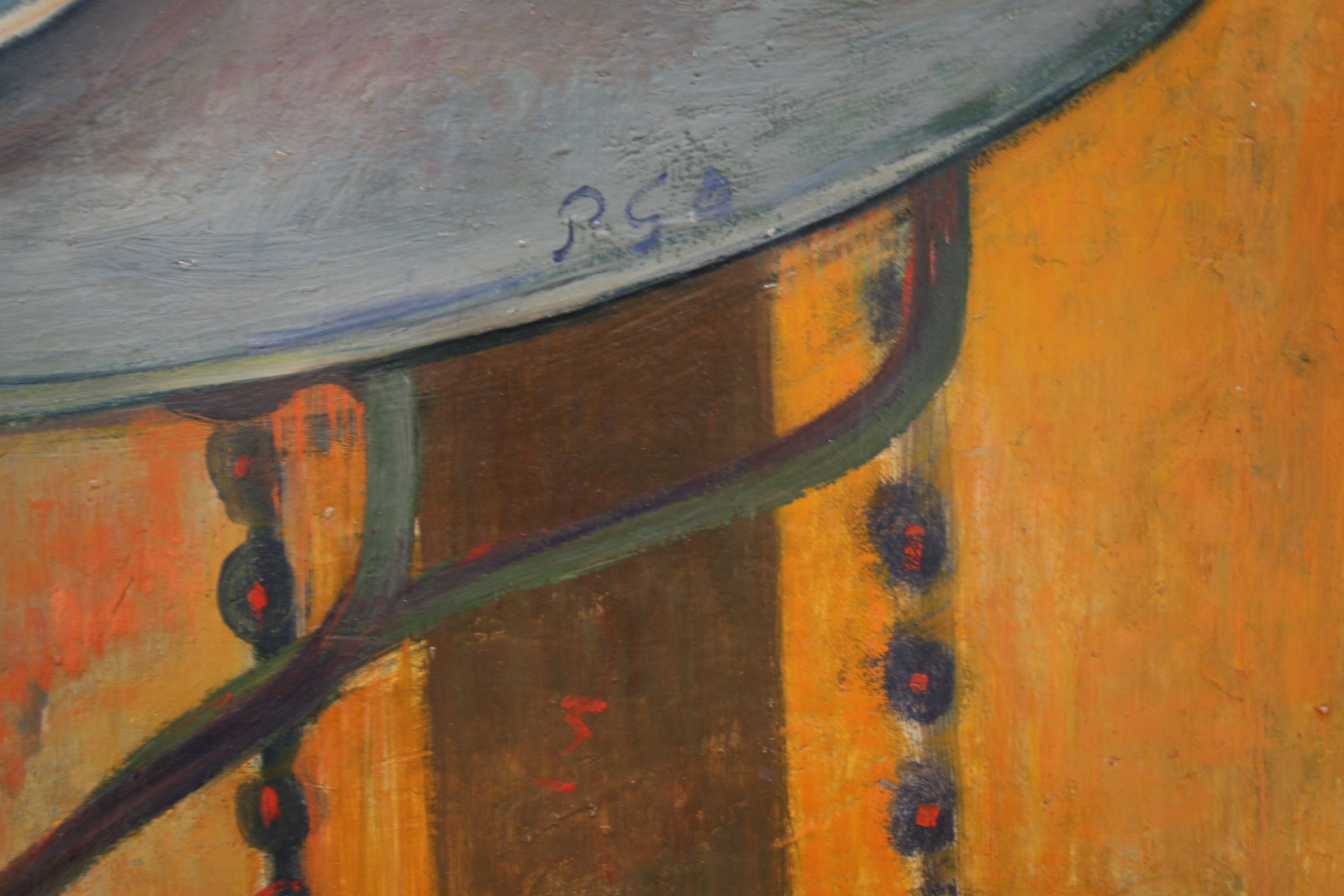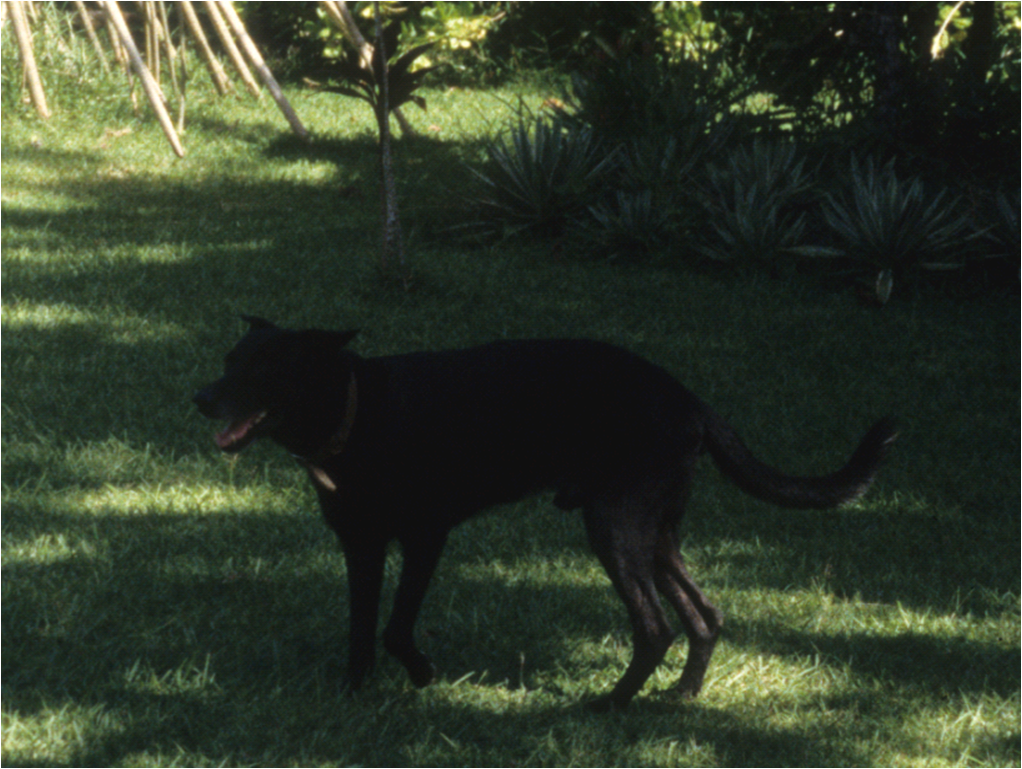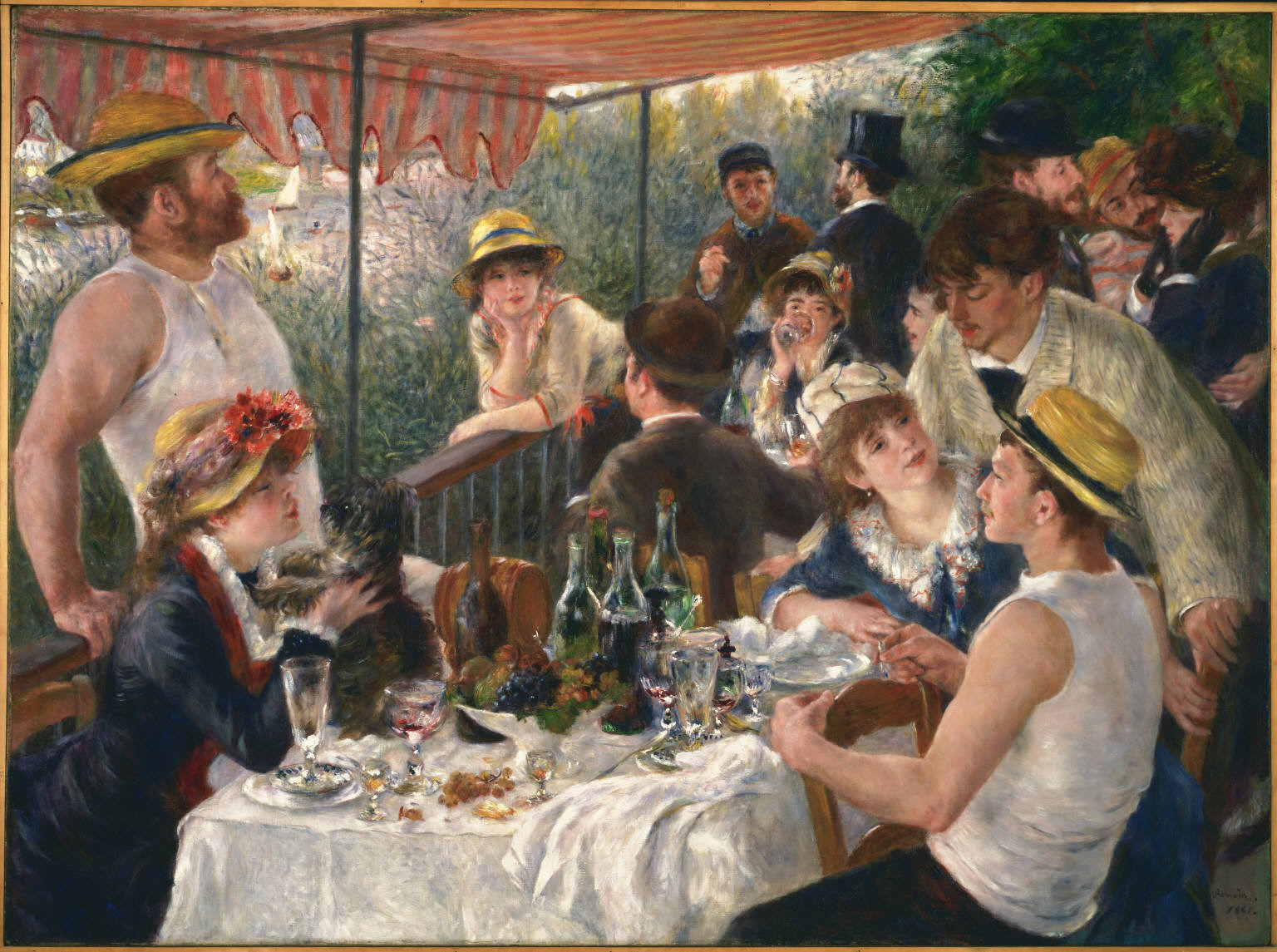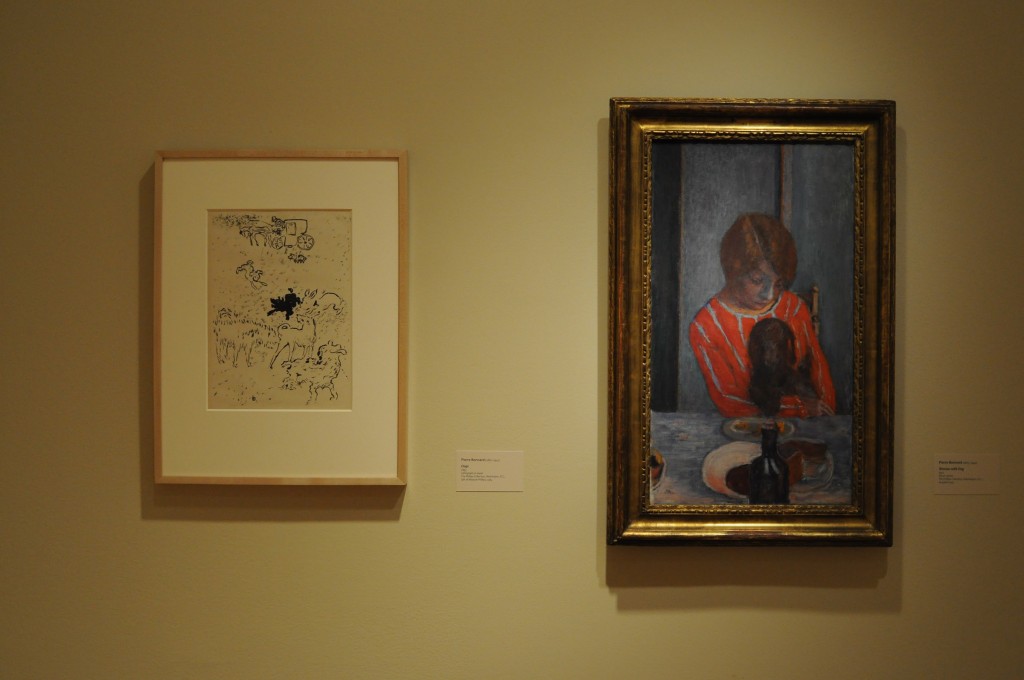
Installation view of two works by Pierre Bonnard in the Snapshot exhibition, both in the permanent collection at The Phillips Collection. At left is Dogs, 1893. Lithograph on Paper, 15 x 11 in. At right is Woman with Dog, 1922. Oil on canvas, 27 1/4 x 15 3/8 in. Photo: Joshua Navarro
When I entered Snapshot, the pairing of Bonnard’s painting Woman with Dog (above right) with his lithograph Dogs (above left) delighted me. By my count, the exhibition features five works in which Bonnard includes canines, and I love how each picture captures dogs doing what dogs do—begging, cuddling, running, playing, etc.
Look more closely at Dogs. Did you notice how the fluffy dog in the mid-ground is sniffing the rear of the pup he’s next to? Behind them, Bonnard includes three pooches in play bows as they get acquainted before galloping off. Do you see the black smears throughout the composition? Funny how they resemble paw prints, as though the pups ran across the surface of the composition. Continue reading

